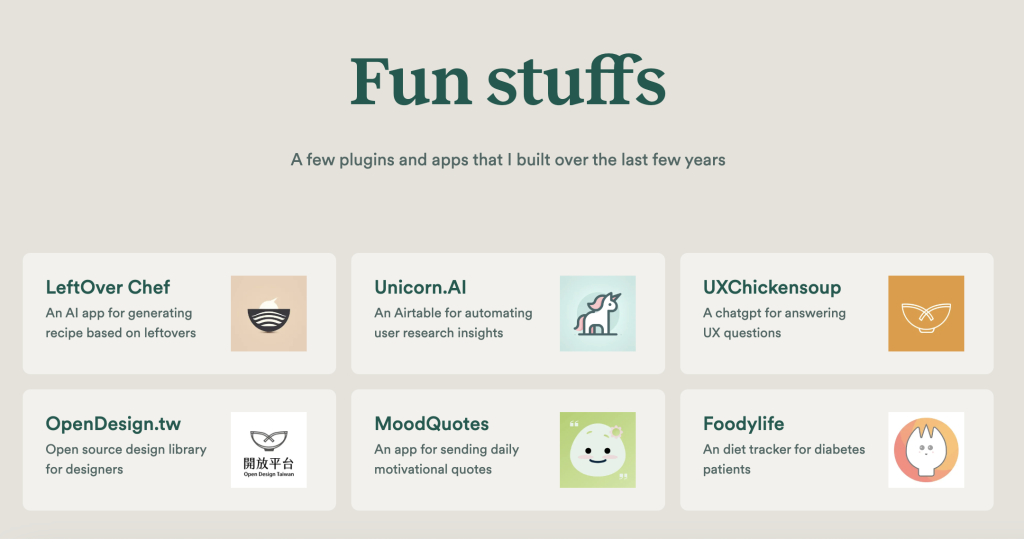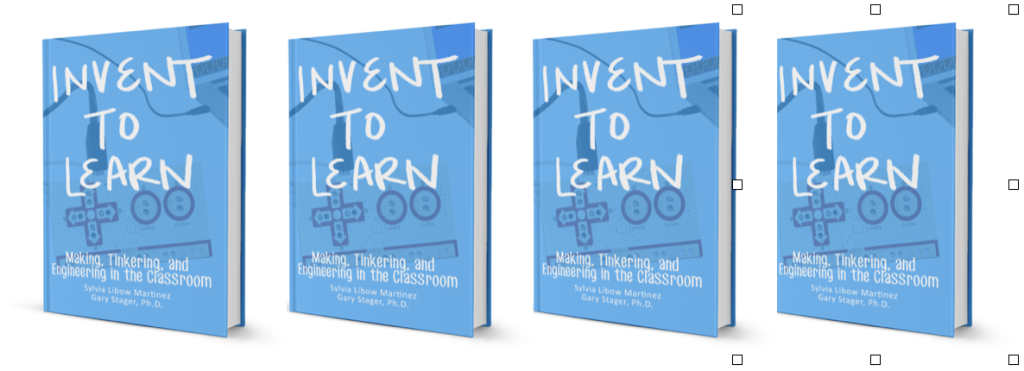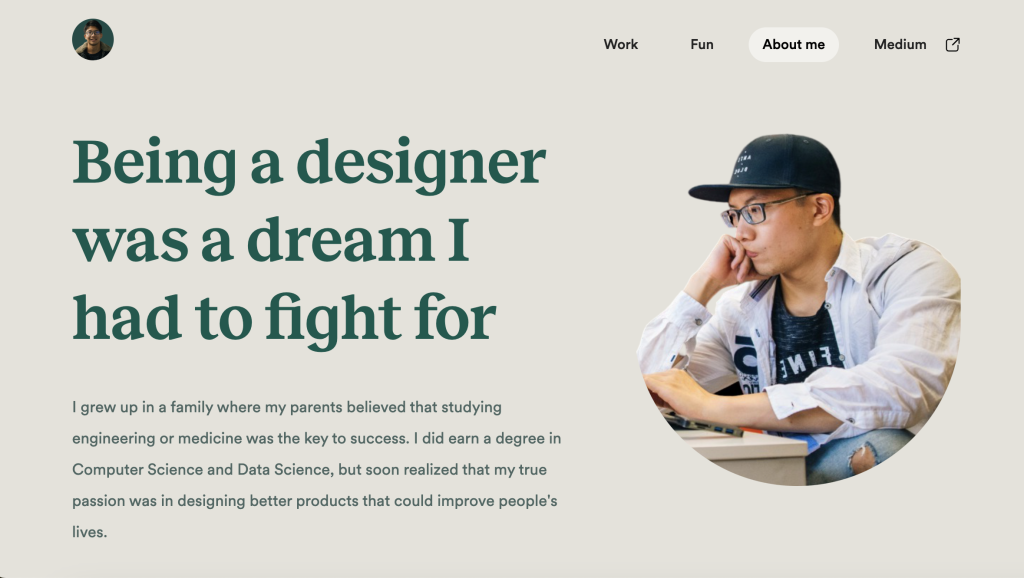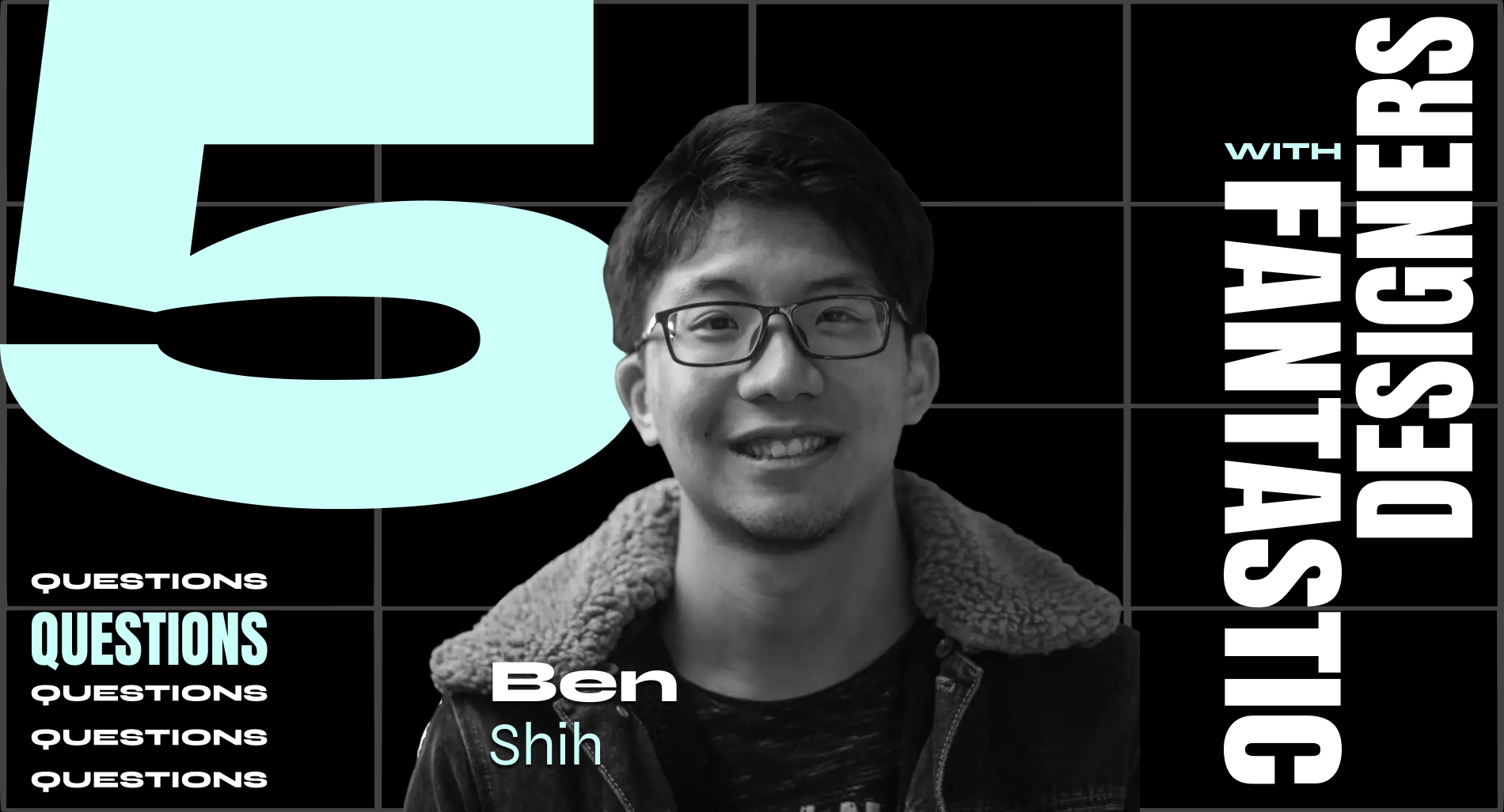Ben is a Taiwanese designer based in Amsterdam. He graduated with a degree in Computer Science and holds a double master’s degree in Human-Computer Interaction. He loves design but enjoys building products, that can make the world just a bit better, even more. He first got into design and development when he built a diet tracker app called FoodyLife, where he designed and developed the app from scratch, growing it to 50k users within just six months. Since then, he has built more apps independently and in collaboration with governments and startups, to develop apps that impact people’s daily lives.
In the past few years, he has spent the majority of his time working as a founding designer for AI startups, helping them discover user problems, creating the best possible user experience, and bringing them to market. Now he’s fully focused on leveraging his background in data, design, and engineering to help good-products drive growth and adoption and to help more users find value in these products.
He is currently leading design for Growth at Lokalise and co-organizing one of the largest design communities in Taiwan, UX EastMeetsWest.

1. What design trends do you think will take off this year and more in the future?
I believe designers will be able to spend more time focusing on our actual job — crafting amazing experiences for people. In the past few years, there have been far too many tasks on designers’ plates. While work like writing design specs, preparing workshops, and reporting design work is important in our day-to-day processes and driving team alignment, these tasks sometimes distract us from focusing on what we should truly prioritize — solving problems for people.
With the support of AI, I believe a lot of the work can be automated, and designers will be able to concentrate more on creating better experiences for people.
As a startup person, another near-future trend I’m hopeful for: is seeing more designers founding companies and building products. As Noah Levin, VP of Design at Figma, mentioned at Config 2023, AI will not only lower the barrier for non-designers to enter the design world more easily, but also allow designers to break the ceiling between design and development. This makes it easier for designers to bring our creativity into the development world. Therefore, I am really looking forward to seeing how designers will further impact the world with the help of AI and continue to prove to the world that design matters.

2. When it comes to making design and the design industry more diverse, equal, and inclusive, what changes are needed or would you like to see?
As designers, we always want to take care of every single user’s needs and make sure our designs are solving all the problems. However, especially in smaller teams where you might not have enough resources, our desire often conflicts with business needs, as pushing for a more inclusive design can sometimes be regarded as high-investment/low-return work for businesses.
Now with the support of AI, I do believe a lot of the work can be automated, and designers will be able to push for accessibility and inclusive design more easily within their own organizations. For this purpose, I would like to see more designers embracing AI in their workflows and exploring opportunities to make an impact by using all the tools around us.
I am also looking forward to seeing the New European Accessibility Act (EAA) implemented in 2025. With the tools available and government initiatives pushing for better accessibility, I believe there will soon be a big wave in the tech world that will motivate more businesses to build not only a diverse, equal, and inclusive environment but also products that reflect these values.

3. What are 2 things you were not taught in school (if you were formally trained in design) that you wished you had been taught?
First is teaching in general terms. One of the books that have inspired me the most is “Invent to Learn” by Sylvia Libow Martinez. The book does not talk about design, but more about how teachers can leverage tools, materials, and environments to turn children into makers.
Some good examples are things such as, turning a corner of a classroom into a LEGO zone. A place where children can have a safe space to be creative. While this might not seem directly related to design, I believe such facilitations, which turns everyone into creatives, are incredibly important in our day-to-day. I often quote Tim Brown from IDEO, who says, “Everyone is a designer,” because I believe this is true. Everyone can be a designer, and our job as designers is sometimes to ignite the designer spirit in everyone, transforming teams into collaborative units that build better products together.
Second is storytelling. Humans love stories. That’s how we grew up, and that’s how we make sense of the world. One thing I learned while advancing in my career is that my work is almost entirely about meetings and presenting work to stakeholders. One unfortunate thing I have learned from this, is that even if you have the best design in the world, if you present the story badly, the design can be negatively perceived. This can trigger a lot of chaos that you don’t want to deal with. Therefore, I think mastering storytelling is one of the most important skills for designers to acquire. Simply because how you craft your story determines how your design is perceived, treated, and implemented.

4. What are the biggest challenges you’ve had to face as a designer? Did you overcome them? How?
One challenge I encountered as I advanced to a more senior position, was managing all the stakeholders around me. When I started my career, the only stakeholders I interacted with were the PM and engineers. However, as I became more senior, I found myself surrounded by marketing managers, branding managers, sales, CSM, researchers, writers, and others. At some point, it became overwhelming to communicate and receive feedback from so many stakeholders while trying to keep everyone happy.
One thing I have learned over the past few years, is that the best way to navigate through this is by leveraging the “trust battery theory” from Shopify’s CEO Tobi Lütke to build the foundation of your stakeholder relationships. This theory suggests that every relationship starts at 50% trust, and the more you trust each other, the higher the percentage becomes. If there’s conflict or mistrust between each other, then the percentage becomes lower.
What I often do is, every quarter, I map out all the important stakeholders around me and visualize their ‘battery’ level. If I feel like the battery is lower than 50%, then I will proactively reach out to them for a coffee chat or organize different activities to increase the battery level. By increasing the battery, you also build a tighter relationship with each stakeholder, which really helps when you are communicating designs and vision to them, as they trust you to deliver your work. By managing the batteries with different stakeholders well enough, you create trust with each other, making it easier to convince and sell your design to others.

Anton’s way of escaping from the bias is the creation of the most odd images that come to his mind
The only way to achieve this flexibility is to allocate proper time for experimentation and “stretch this muscle” until it becomes second nature. While you can use AI tools to polish your writing, presentation / narrative know-how is something you need to master yourself.
On a related note, something similar happens due to the increasing complexity and feature set of dedicated tools. When you open Blender, you might realize that you can do a complete picture there. And with that, the rabbit hole may appear. The challenge I see is always to have the skill to step back from a tool to focus on the story and concept. And if, for that to happen, you need to combine several tools or even exclude the one you usually employ, that’s fine. In other words, detaching from an accustomed tool is a bit of a challenge.
Similarly, I would expect over reliance on Midjourney and similar generative tools.
5. Why do you think Design Matters?
Design matters because it helps us solve problems, think creatively, understand the world around us, develop empathy, and be critical. Just as you would hire an architect when building a house, design plays an important role in creating functional, beautiful, and meaningful solutions in all aspects of life.

* * *
Do you want to hear more from Ben? He will give a talk at the digital design conference Design Matters 24. Connect with Ben on X @hbshih or @_benshih on Threads & Instagram.
Don’t forget to check out Ben’s …
Linkedin: https://www.linkedin.com/in/hbshih/
Medium (Update monthly): https://medium.com/@hbshih
Website: https://benshih.design/










